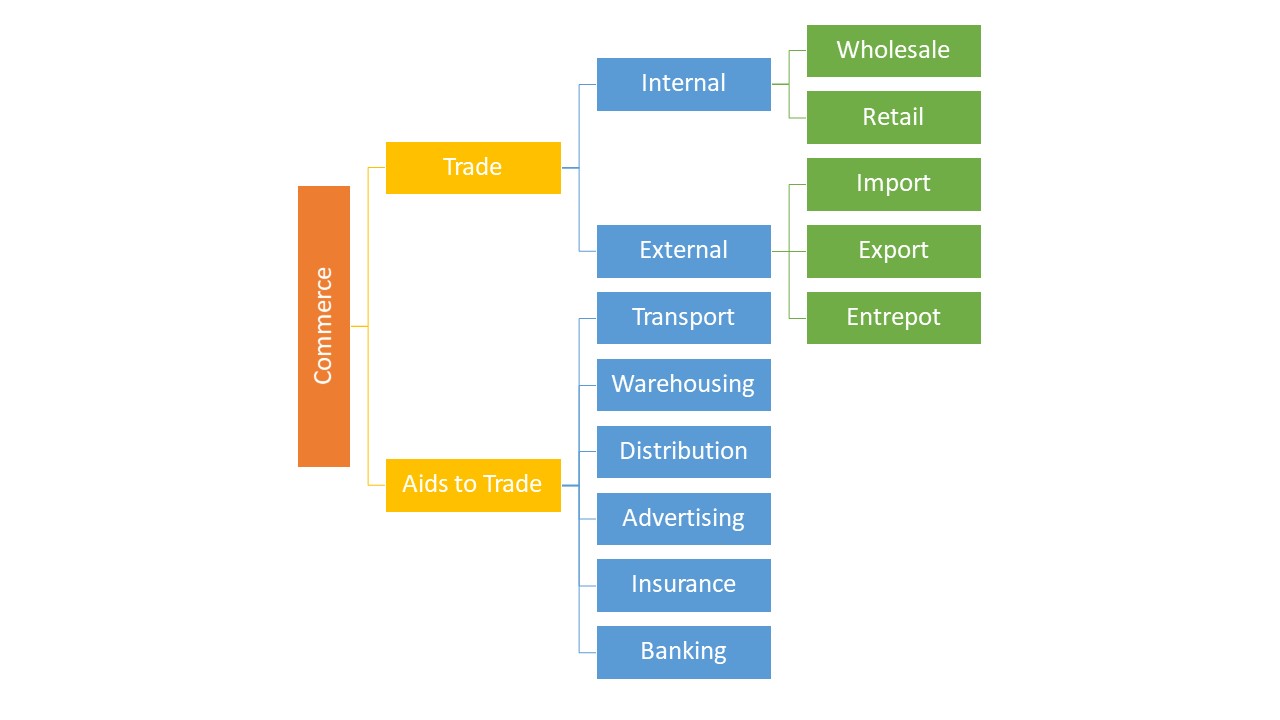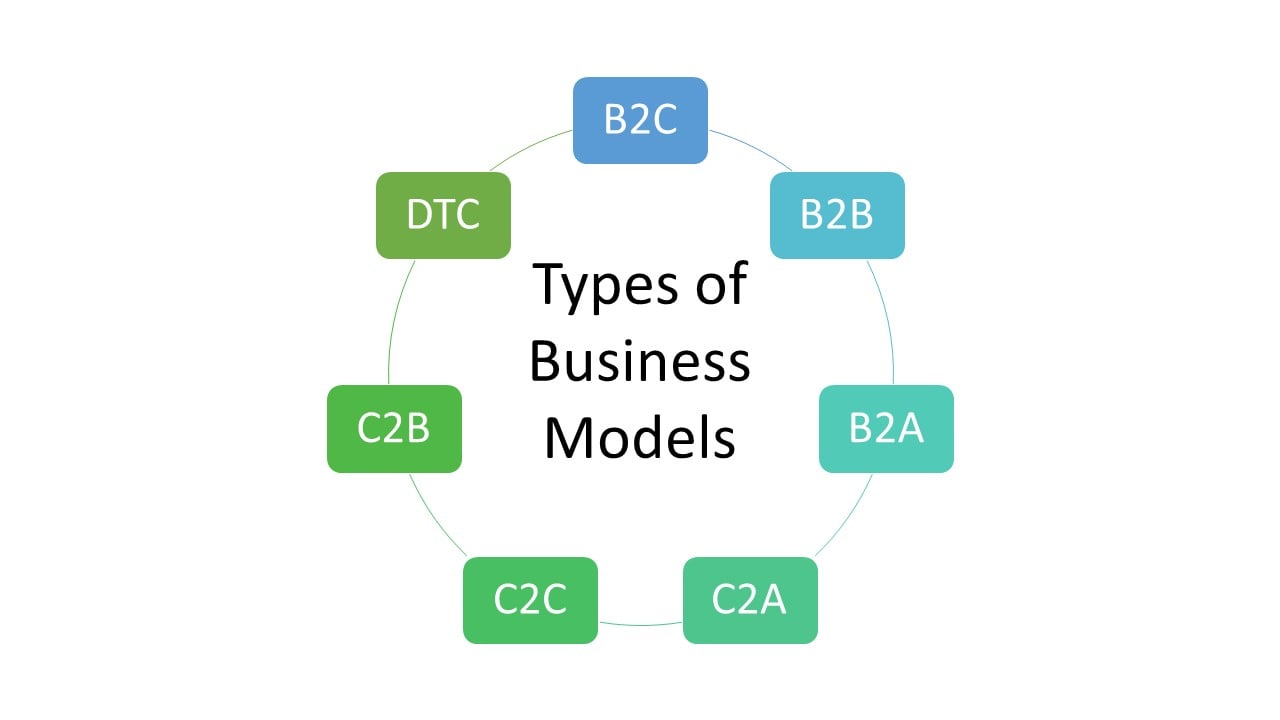Commerce
What is commerce?
Commerce is essential to the global economy. It encompasses everything related to the buying and selling of goods and services at both the wholesale and retail levels.
Key takeaways
- Commerce involves the exchange of goods and services, often for a profit
- There are two branches of commerce – trade, and aids to trade
- Trade can be either internal (within a country’s borders) or external (between countries)
- Aids to trade include transport, warehousing, distribution, advertising, insurance and banking
- There are seven primary commerce business models: B2C, B2B, B2A, C2A, C2C, C2B and DTC
Defining commerce
Commerce is defined as the exchange of goods and services between two or more entities. It typically involves buying and selling things of value. Commerce can take place between businesses, between consumers, or between businesses and consumers.
Commerce involves an exchange of value and often generates a profit for one of the parties involved. It also includes services provided by companies and other organizations that facilitate the commerce exchange.
Commerce is important to our society in five essential ways:
- Commerce satisfies individual wants and needs
- Commerce links producers and consumers
- Commerce increases the standard of living
- Commerce creates employment opportunities
- Commerce generates profits
Know that commerce is not the same thing as business – it’s a subset of what we call business. Commerce also involves the distribution of goods produced by manufacturers, leaving out the manufacturing or production processes.
Branches of commerce
There are two branches of commerce – trade, and everything that aids trade. Within each branch are several sub-branches that define each one.

Trade
Trade is any exchange or sale of goods and services between two or more parties. There are two primary types of trade – internal and external.
- Internal trade refers to trade that takes place within a single country’s borders. These internal sales can be either wholesale or retail:
- Wholesale trade occurs when a retailer buys a product from a manufacturer for eventual resale to consumers
- Retail trade is the sale of products from retailers to the end consumers
-
External trade refers to trade that takes place between entities in different countries. For example, if a factory in the United States buys parts from a manufacturer in China, that’s external trade.
There are three types of external trade:
- Import refers to the purchase of goods from another country
- Export refers to the sale of goods to another country
- Entrepot refers to the purchase of goods from one country intended for sale to a third country
Aids to trade
Aids to trade are all the activities that assist in the process of trade. These include:
- Transport is the process of moving products from one location to another, whether raw materials moving from a supplier to a manufacturer, or finished goods moving from a retailer to a consumer
- Warehousing involves the storage of goods before they are sold and transported to another entity
- Distribution occurs when goods are sold from one entity to another – manufacturers distribute to wholesalers, wholesalers distribute to retailers, and retailers distribute to consumers
- Advertising is used to make buyers aware of the goods and services offered by sellers – and convince them to buy those goods and services
- Insurance alleviates some of the risks associated with the trade process
- Banking provides the financing necessary to bridge the gap between when an item is produced and when it is purchased, and to help keep a business open
Commerce business models
There is no one type of commerce. Businesses buying from other businesses is one form of commerce, consumers buying from businesses is another form. Today we identify seven primary commerce business models, as detailed below. All of these business models can take place either physically or online via an ecommerce platform. In addition, some of these business models can be combined to create a commerce chain from production all the way through to the end consumer.

B2C: Business-to-Consumer
The business-to-consumer (B2C) model is probably the one people are most familiar with. It refers to any instance where a business sells a product or service to a consumer. Any retail store is an example of B2C commerce, as are online retailers such as Amazon.
B2B: Business-to-Business
When a business sells a product or service to another business, that’s business-to-business (B2B) commerce. With B2B commerce, the business doing the buying often resells the product or service to consumers, creating a B2B2C chain.
B2A: Business-to-Administration
Business-to-administration (B2A) commerce occurs when a business sells a product or service to a local, state, or federal government agency. B2A commerce is sometimes referred to as B2G or business-to-government commerce.
C2A: Consumer-to-Administration
Individuals can also sell products or services to the government. When this occurs, it’s called consumer-to-administration (C2A) commerce.
C2C: Consumer-to-Consumer
Oftentimes, individual consumers sell products and services to other consumers. This is consumer-to-consumer (C2C) commerce, as typified by sales enabled through online marketplaces such as Craigslist and eBay.
C2B: Consumer-to-Business
When an individual consumer sells a product or service to a business, or otherwise provides value to a business, that’s called consumer-to-business (C2B) commerce. C2B commerce doesn’t have to include monetary payments to the consumer. For example, a consumer contributing to a focus group for a business is engaging in C2B commerce.
DTC: Direct-to-Consumer
This commerce business model occurs when a consumer buys a product or service directly from a manufacturer, bypassing the retailer. This is called direct-to-consumer (DTC) commerce and essentially cuts out the middleman.
Let Optimizely help you grow your commerce business
Your business is involved in some aspect of commerce. Optimizely offers a variety of products and services that can help you run your business, including a robust digital experience platform, optimization-as-a-service, full stack testing and more. Optimizely can be your trusted partner in all matters related to your business’ commerce.